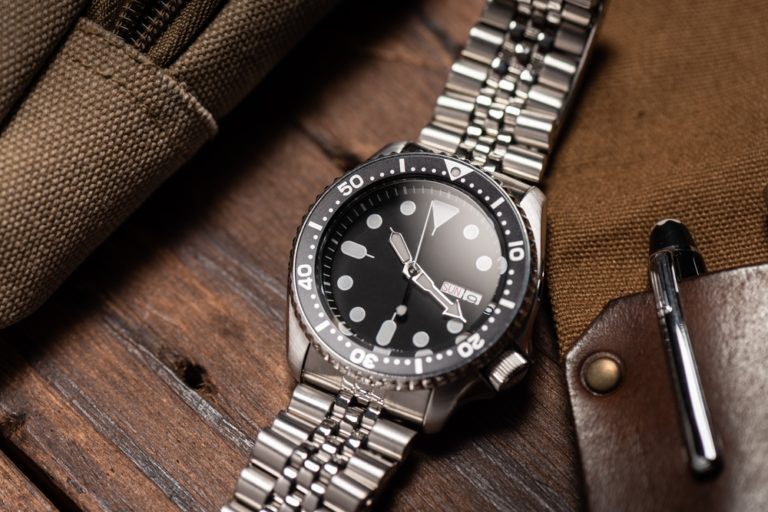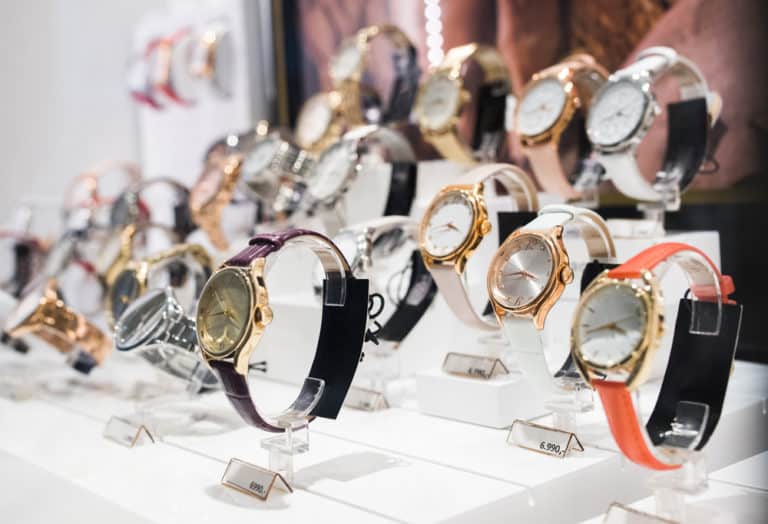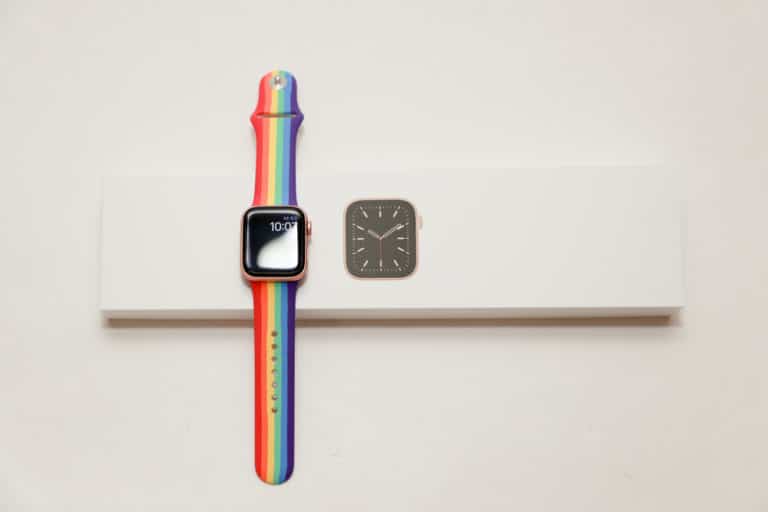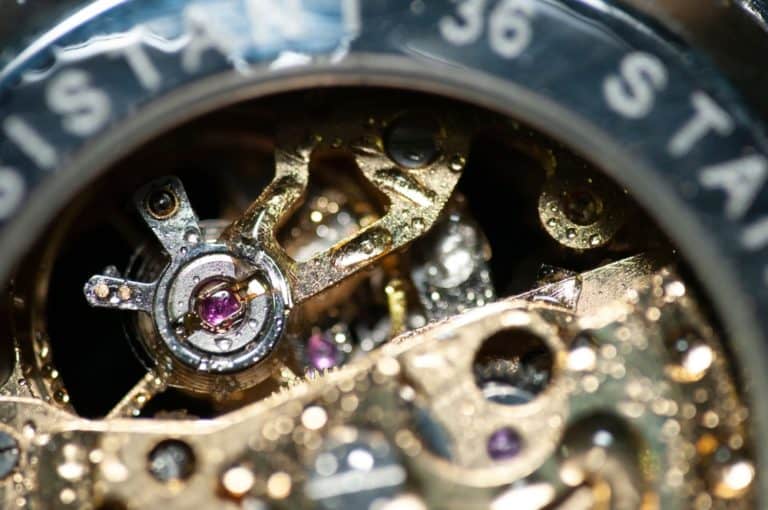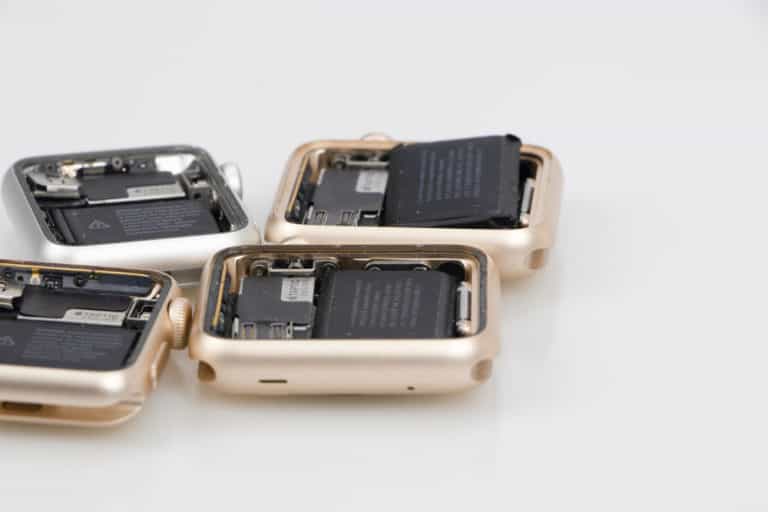You have just bought a new watch and want to know whether it is water-resistant. Turning it over and inspecting the back, you see a few numbers and text that says ‘water resistant to 30m’ – but what does this mean, and how can you tell if your watch is water resistant?
There are four designations on a watch to whether it’s waterproof or water-resistant, measured by BAR / ATM and Meters (M). A watch rated at 30M or 3ATM is resistant to splashing, but you cannot swim to 30m with it, while a watch rated at 20ATM or 200m is completely waterproof.
Let’s dive into the depths and examine what makes a watch water-resistant or waterproof and what the various numbers mean so you can choose the right water-resistant watch whether you are diving deep or just splashing around at home.
Why Is It Important For A Watch To Be Water Resistant Or Waterproof?
Aside from the cheap watches, any decent watch will suffer damage if even a drop of water or moisture penetrates the casing. The sensitive electronics can short, and the mechanism could stop working or fail if water comes into contact with the components.
Also, with general living, you are likely to come into contact with water at some point, whether intentionally or not, and here it pays to have a water-resistant watch, at least, if not a waterproof one.
Splashes from taps, hosepipes, or the pool can create havoc with your watch if it’s not sealed and protected against water incursion, and it goes without saying that if you are diving or spending a lot of time in the water, you need a watch that has good water resistance.
Now, let’s examine the various types of water-resistant ratings you can get on watches so you can see at a glance what any watch’s waterproof or water-resistant rating is.
What Are The Types Of Water-Resistant Ratings, And What Do They Mean?
When rating the water resistance in a watch, manufacturers use three terms to describe the level of waterproofing in any given model.
The letter’ M’ stands for meters , ‘ATM’ is atmospheres and is a measure of depth, and ‘BAR’which is a measure of pressure rather than depth.
What The ‘M’ Means On A Watch?
Because many watch manufacturers originate in Europe, they tend to use metric measurements on their watches, which is why the letter M describes the depth in meters the watch is rated for.
But, this is not always an accurate description of the actual depth the watch can be submerged; we will examine this in more detail later.
What Does ATM Mean On A Watch?
ATM is the abbreviation for Atmosphere, and one Atmosphere (1ATM) is equivalent to 10m, so a watch rated 3ATM would be rated waterproof to a depth of 30m or approx 98 ft.
What Does BAR Mean On A Watch
This is an expression of pressure rather than depth and is a common term amongst watchmakers. Some luxury watches may have this printed on the dial or the back, and while it sounds fancy, it’s much the same as the ATM and M.
One BAR is equal to one Atmosphere or 10m.
So, if we have a watch with the 10M/1ATM/1BAR, all of these notations are essentially the same and mean that the look has a low rating in terms of water resistance.
Now, let’s look at what these ratings mean and the difference between water-resistant and waterproof.
Waterproof Vs. Water Resistant- What’s The Difference?
It’s important to understand that a water-resistant watch is not waterproof, and a waterproof watch is water-resistant.
Don’t be fooled by the ratings on a watch, as the lower ratings can be misleading in terms of the real-world water resistance of the watch.
Water resistance means that the watch can resist light and occasional splashings but would not be sufficient to resist water under pressure, even from a hosepipe or shower.
Waterproof watches can be submerged to rated depths without water breaching the seals and damaging the watch.
3ATM/30M/3BAR Rating – Water Resistant
This rating denotes a water-resistant watch that can resist water splashings, so nothing is under pressure, like water from a hose or submersion to depths of more than 1-3m (3 ft-10 ft) at any time and while some owners purport to dive or shower with these watched, most watches that have a water-resistant rating should not be submerged.
If your watch has a rating of 3ATM/30M/3BAR, you may think that you can dive to 30M with this watch, but that is not the case at all. This is the lowest rating of water resistance on a look, and this watch would only be resistant to water splashes like when washing your hands and rain.
Showering or swimming with a watch with a 30M/3ATM/3 bar rating is not recommended, as the gaskets are not designed to deal with water pressure at those depths.
This watch is purely water resistant, and if you need a timepiece that can survive underwater, you need to look at a higher waterproof rating.
5ATM/50M/5BAR – Short Period Submersion
While you may think you could dive to 50m (165ft) with this watch, you would be mistaken! This watch is fine for the pool or shower, but this watch will not survive the pressure assuming you can get close to 50m.
This rating is more robust than the 3ATM/30M/3BAR rating, but don’t be fooled here. This is not a diving watch; even diving into a pool or doing some energetic swimming would put this watch at risk for failure.
10ATM/100M/10BAR
Now we start getting into the watches that are waterproof and properly so. Watches with this rating would shrug off any water splashes easily, and you could use this watch for most water sports, including skiing, surfing, and diving.
While the 100M mark is probably a little ambitious, these watches are robust and durable and would be the minimum we recommend as a daily wear watch if you are likely to be in and around water at any time.
20ATM/200M/20BAR
Now we get to properly waterproof watches. With any of these ratings, these watches can be taken down to depth without risk of failure and are suited to deep diving and other activities where the wearer is underwater for long periods.
The same applies to watches rated at 30ATM/300M/30BAR.
100ATM/1000M/100BAR
These watches are reserved for the SAT or Serious Saturation Divers and are designed to resist the immense pressure at these depths. While other diver’s watches have more general purpose and functionality, these watches are designed to keep their wearers alive.
They are made from far stronger materials than lower-rated ATM/BAR/M watches with thick case walls and sapphire diamond crystals several millimeters thick. The faces tend to be far larger than conventional watches.
Which Watch Has Been The Deepest?
One of the most dependable watch brands when it comes to waterproofing is Rolex, and while many brands are not always keen to label their watches as waterproof, Rolex’s Oyster case has withstood depths of 100M since 1926.
To prove how solid these watches are, the first voyage to Challenger Deep, or the bottom of the Mariana Trench, took place in 1960, when Jacques Piccard and Don Walsh dived in the bathyscaphe Trieste.
Instead of having their Rolex Deep Sea Special on their wrists, they strapped it to the outside of the submersible and descended into the ocean’s depths.
They descended to a depth of 35787ft or 10908m which is deeper than Everest and is tall by some margin! And even more interesting was that this was not the only time Rolex proved its incredible engineering!
IN 2012, legendary filmmaker James Cameron strapped a special version of Rolex’s Sea-Dweller model to the robotic arm outside their submersible as they made the same trip as Walsh and Piccard!
Both watches survived the trip intact, but this should be considered the exception to these rules, as even a 100ATM/1000M/100BAR watch would probably not survive a trip like this!

Why Does Waterproofing In Watches Fail?
The waterproofing structures in a watch can fail for several reasons, fluctuating temperature and pressure and the pressure of the water itself.
Water Pressure Can Cause A Waterproof Failure
Water is one of the most powerful forces and elements on the planet and what many people don’t know is that one cubic meter of water weighs a TON! This volume is 35.31 cubic feet, so going underwater, even by 1 meter or 3,3 feet, exerts fair pressure on a watch.
If you have ever sat on the bottom of a pool and felt your ears start to hurt, that is the weight of the water pressing into your eardrums, and as you go deeper, the water pressure increases exponentially.
This is why many watches rated as waterproof to depths of 30M or 50M often fail when tested at this depth, as the gaskets and frame cannot repel the pressure, so that water will find its way into the casing through the weakest point.
At 50m down, the water pressure would be almost five times that at sea level, and any weaknesses in the watch casing or gaskets would lead to water infusion and failure. If you need a waterproof watch, you need to look at watches rated for 100M or higher.
Fluctuating Temperatures Can Cause Waterproofing In Watches To Fail
On the surface, the temperature is warmer than under the water, and the deeper you go, the colder it gets.
Aside from the pressure, temperature fluctuations will cause the sealing components to expand as they get warmer and shrink as they get cooler. This can cause them to suffer minute cracks which, when exposed to the relentless gaze of water pressure, will allow water to leak in.
An example of this is when you may live in a very hot environment and then decide to go diving with your watch in a much colder climate. The drastic temperature variation can cause the waterproof components to contract and fail faster than usual.
If diving in much colder waters than you usually do, it would be wise to slowly acclimate your watch to the temperature before diving to allow the components to adjust accordingly.
Fluctuating Water Pressure Can Cause Waterproofing In A Watch To Fail
As you dive and then surface, or as you swim, the water pressure on your watch changes, and this can also cause the gaskets to fail as they expand and shrink as the pressure decreases and increases.
Where Can Watches Leak Water?
The most vulnerable part of the waterproofing in any watch is the O-ring, and over time this can lose elasticity as they dry out, so if you are doing a lot of diving, you should regularly check the O-ring in your watch and replace it if need be.
With diver’s watches, the number of access points for water is limited and more robust, so the crown is screw-down, and the cases are heavier with thicker gaskets to last longer.
Still, watches not rated for diving tend to have buttons and lighter gaskets that are more susceptible to water damage if pushed beyond their rated limits.
What Water Resistant Rating Should Your Watch Be?
The level of water resistance or waterproofing you require will depend solely on how you intend to use your watch.
If you are a recreational diver, then you should invest in watches that are well above the maximum depth you would ever descend – so if you are only going down to 10M or 33 ft, then look at a watch rated for 100M as these will easily handle the pressure at lower depths.
If you are doing more serious diving, a watch rated for 200M or 300M would be better, and as an SAT diver, you would need a 1000M rated watch.
If your water activities are more casual, like days by the pool and some light swimming, you could opt for the 50M rating as the minimum.
Conclusion
You can tell the water-resistant rating on your watch from the designation printed or embossed on the casing with 3ATM/3BAR/30M as the minimum and 200M/20BAR/20ATM as the maximum.
Now that you know what those numbers mean, you have a good idea of the watch’s water resistance or waterproofing level and what you need to buy to ensure your watch survives your aquatic encounters!
Resources
- https://www.bobswatches.com/rolex-blog/watch-101/waterproof-watches-vs-water-resistant-how-to-tell-the-difference.html
- https://precisionwatches.com/water-resistance/
- https://www.quora.com/How-do-you-test-if-your-watch-is-waterproof-and-water-resistant-at-home
- https://misterminit.eu/en_cz/blog/is-your-watch-waterproof-or-not

